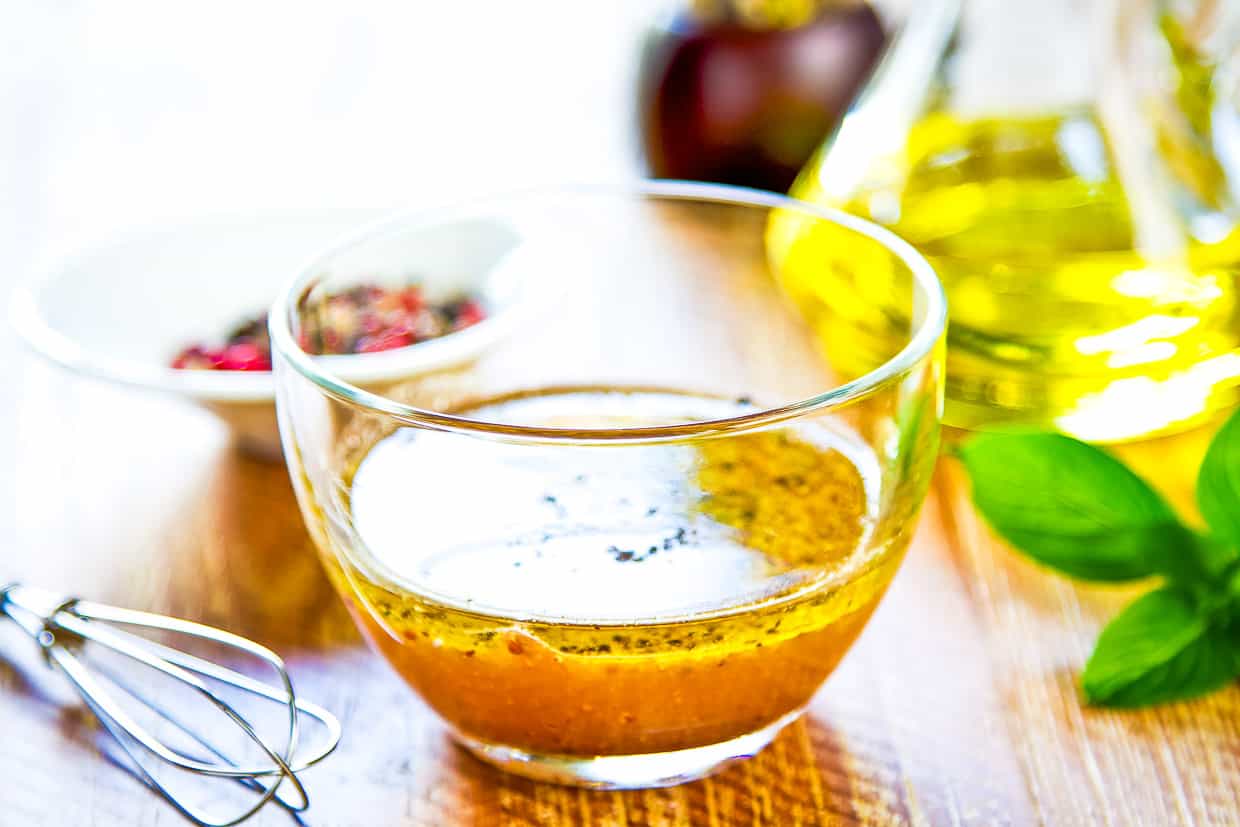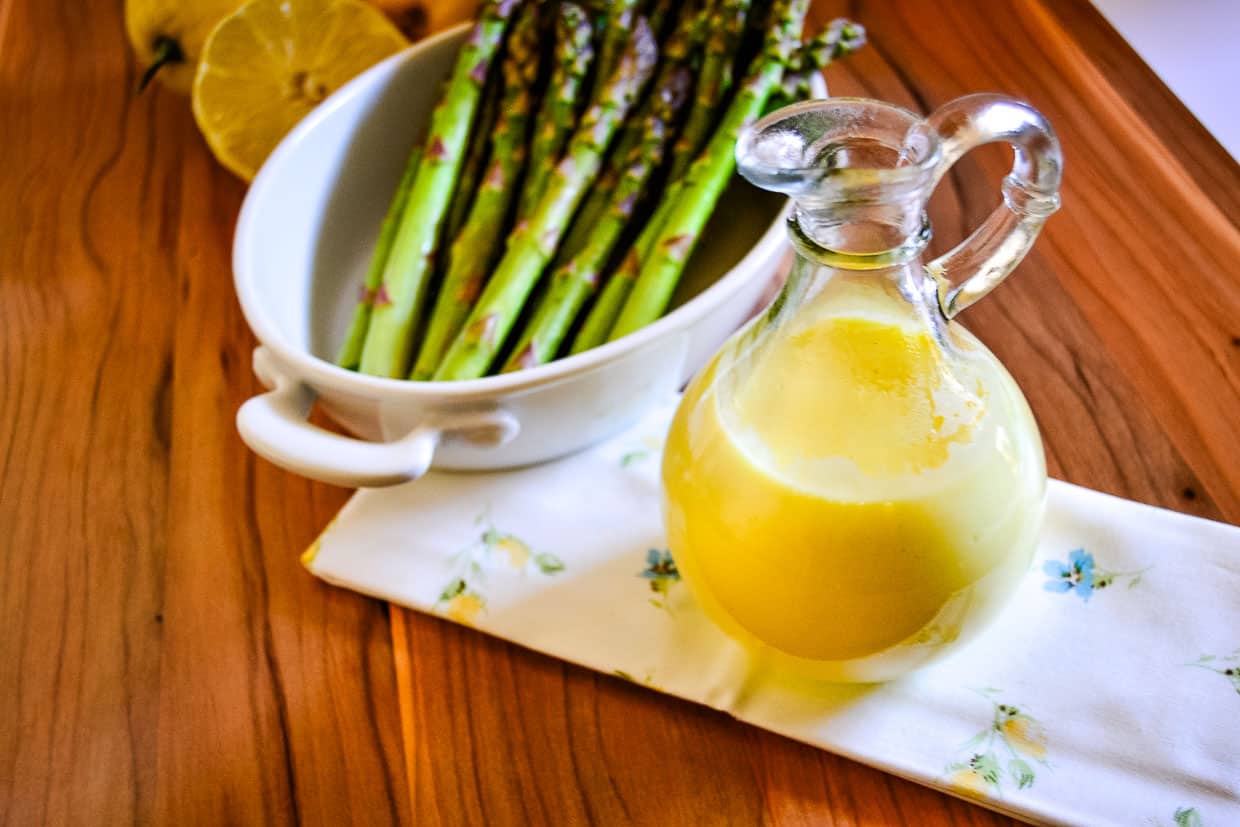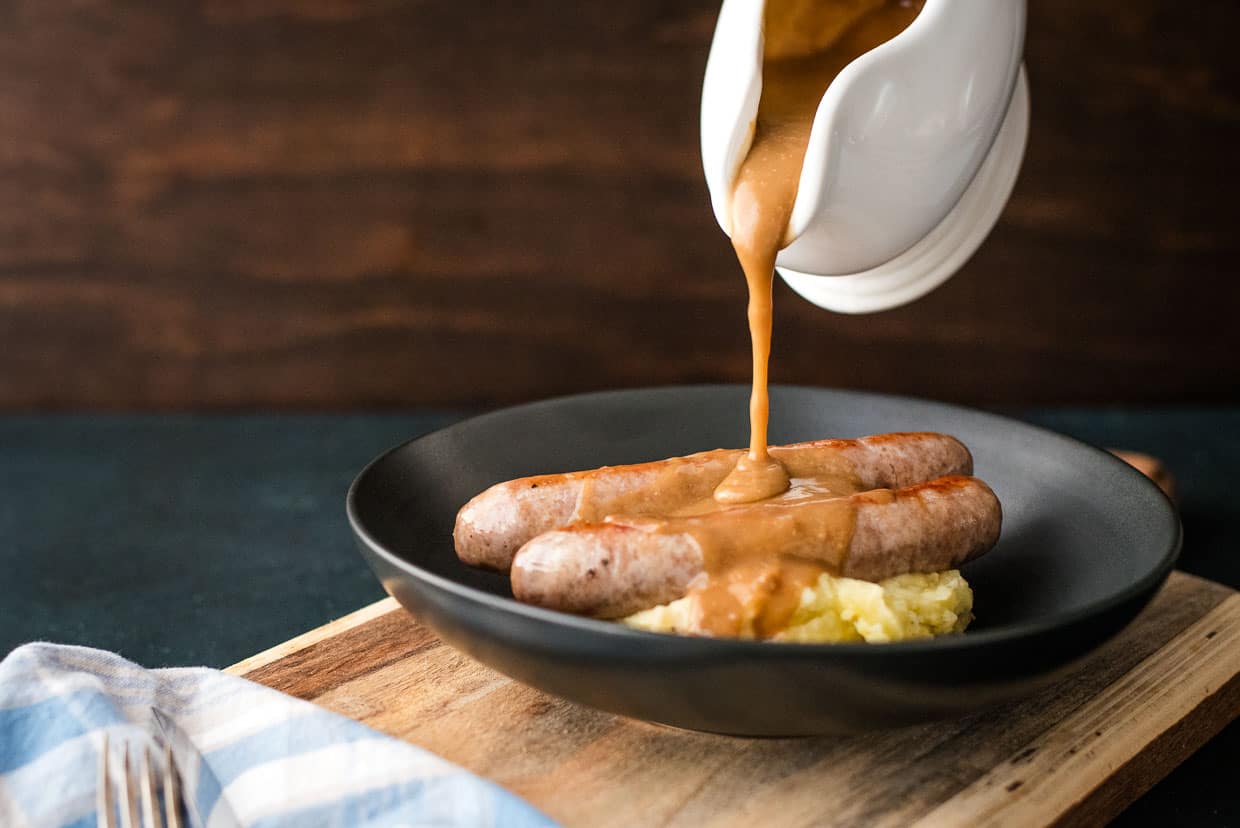Emulsification is the culinary magic that combines oil and water into creamy dressings, luscious sauces and tender baked goods. As aspiring cooks, understanding the science behind emulsification can be the secret ingredient to mastering the art of flavor and texture in the kitchen.

Emulsification explained
Understanding emulsification begins with unraveling the process that transforms seemingly incompatible ingredients into harmonious culinary creations. This phenomenon powers some of the most beloved culinary concoctions, such as creamy vinaigrettes and velvety mayonnaise, proving that even in the world of cooking, opposites can attract and thrive together.
Before delving deeper into this aspect of culinary science, it’s important to start with the key players in the emulsification game. Meet oil and water, classic antagonists in the kitchen, perpetually poised on the brink of separation. Emulsifiers can merge oil and water into a stable, homogeneous mixture. These emulsifiers ensure that emulsions like oil-in-water and water-in-oil are not just possible but delightful culinary realities.
The science behind emulsification
Ingredients must undergo a two-step process that happens on both a physical and chemical level to create and maintain a stable mixture of properly emulsified immiscible liquids. First, physically emulsify the ingredients, and then the chemical emulsifier can stabilize it into emulsification.
Emulsifying
Surface tension is the foundation for the science of emulsification, a fundamental property of liquids that influences culinary outcomes. Surface tension is the tendency of a liquid’s molecules to stick together at its surface. It’s the principle that makes a belly flop painful, and in the kitchen, it dictates whether oil and water will readily combine or repel each other.
Emulsifying is the physical dispersion of those molecules. Mechanical actions like blending, whisking or shaking break down the larger liquid droplets into smaller ones and then distribute them throughout the mixture.
Emulsifiers
After physical emulsification breaks down the molecules, emulsifying agents are responsible for stabilizing the emulsification. Emulsifying agents, also called emulsifiers, are chemicals or compounds with both water-attracting hydrophilic and water-repelling hydrophobic properties. These emulsifiers play a crucial role in stabilizing the emulsion by reducing the surface tension between the two liquids and preventing them from separating.
Common emulsifiers are egg yolks, mustard, mayonnaise, gelatin, honey and cheese. They are often used to stabilize emulsions like custards, dressings, marinades, sauces, vinaigrettes and desserts.
“One of my favorite tricks for making homemade vinaigrette is to whisk a teaspoon of mayonnaise into the vinegar before slowly adding the oil. It’s like magic. That tiny bit of mayo stabilizes the vinaigrette, making it easy to add oil without breaking and creating a glossy dressing that holds together for hours.”
— Rebecca Blackwell, A Little and A Lot

Temperature
While emulsification can happen with ingredients at various temperatures, it is easier to achieve emulsification with warm, but not hot, temperatures — for example, baking, where many recipes call for using room-temperature eggs and butter. Warming the ingredients allows them to achieve a higher level of fluidity, influencing both the moisture level and texture in the final result.
While these higher temperatures can enhance emulsification, extreme heat can lead to separation or breaking of an emulsion. Once an emulsion breaks, it can be challenging to fix, making it essential to maintain temperature control when working with heated emulsions.
Filled with appetizers, salads, sides, mains and desserts, Food Drink Life's cookbook will become your favorite!
- Easy and delicious recipes from a variety of top chefs and recipe developers.
- Bright, colorful pictures on every page.
- Printer-friendly recipes that you can download instantly to your device.
- Printable shopping list and a kitchen conversion sheet.
Emulsification in everyday cooking
Emulsification is a fundamental aspect of food science that subtly influences various elements of our daily meals, often operating unnoticed by the casual observer.
Sauces and dressings
Sauces are great examples of how proper emulsification results in a velvety texture. When making hollandaise and béarnaise sauces, the gradual addition of butter to egg yolks, often with a dash of lemon juice or vinegar, exemplifies the precise balance required for a successful emulsion.
Caesar dressing relies on emulsification to marry ingredients like egg yolks, olive oil, anchovies and garlic into a creamy, tangy delight. The key is gradually incorporating the oil while whisking vigorously to create a stable emulsion.
Baking with emulsions
When applied to baking, emulsification influences the texture and moistness of cakes and pastries. When done correctly, It contributes to the tender crumb and moistness of cakes while aiding in the uniform distribution of fats in pastry or pie dough, resulting in flakiness.
Achieving the perfect pancake or muffin hinges on mastering emulsification. An adequately emulsified batter ensures fluffy pancakes and muffins with a delightful crumb, while an over-mixed batter can develop too much gluten, resulting in a tough, dense cake. Careful blending of wet and dry ingredients is the secret to success.
Pan sauces and gravies
Emulsification elevates pan sauces and gravies, as they help create rich and smooth textures. Deglazing a pan with wine or broth and then incorporating butter or another fat requires skillful emulsification for a luscious finish.

Fixing a broken emulsion
When an emulsion breaks, whether in a sauce, dressing or other culinary creation, knowing how to mend it can transform a moment of disappointment into a culinary triumph. The breakdown of an emulsion typically involves the separation of water and fat components, often resulting in a visible layer of oil or fat atop the liquid. However, understanding emulsification can provide the knowledge to address such challenges:
- Re-emulsification: Re-emulsification is the first line of defense for repairing a broken emulsion. By reintroducing an emulsifying agent like egg yolk, mustard or mayo and employing vigorous whisking or blending, these agents can bridge the divide between water and fat once more. This action binds the separated components back together, restoring the emulsion’s creamy and unified texture.
- Temperature management: Temperature is a critical factor in emulsification, and when ingredients get too cold, the emulsions can break. Allowing oils or fats to warm up can coax fat molecules back into the liquid phase, aiding in the reformation of the emulsion. Avoid overheating, which could exacerbate the problem.
- Slow integration: Often used when an emulsion breaks after getting too hot, separating the components, allowing them to cool slightly, and then adding them back together gradually can be enough to fix the emulsion. Slowly pouring the separated fat back into the water-based portion while whisking or blending prevents rapid re-breaking of the emulsion.
These fundamental principles of emulsification equip chefs and cooks with the expertise to address emulsion challenges with assurance, whether encountered in a sauce, dressing or any culinary concoction. Rather than regarding a broken emulsion as a culinary setback, it transforms into an occasion to showcase culinary mastery and adaptability, enabling a cook to successfully revive the emulsion, ensuring that the dish not only regains its visual allure but also preserves its intended flavor and texture.
Embracing emulsification
Emulsification is a cornerstone of culinary science that enables the creation of harmonious textures and flavors in a wide array of dishes. Embrace the opportunities to explore and experiment with emulsions, recognizing that these culinary transformations can be rewarding and enlightening. Emulsification, this captivating fusion of science and craft, embodies the essence of culinary innovation and elevates the everyday act of cooking into an adventure of taste, texture and endless possibilities.
Renee N Gardner is the creative mastermind behind Renee Nicole’s Kitchen, a recipe blog based on seasonal ingredients, dedicated to helping home cooks build their kitchen confidence to become home chefs. When Renee isn’t writing, developing recipes or photographing food, you’ll find her in the garden, traveling or enjoying the outdoors with her husband, son and two dogs.
